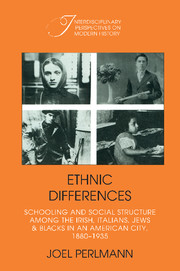 Ethnic Differences
Ethnic Differences Summary
This book is about ethnic differences in American history–differences in schooling and in economic attainments. Dramatic differences in the school achievements of ethnic groups regularly strike observers. The current fascination with the educational achievements of Asian-Americans is typical. The New York Times recently pointed out that “although Asian-Americans make up only 2.1 percent of the population of the United States, they are surging into the nation's best colleges like a tidal wave,” constituting, in 1985, 11% of the freshmen at Harvard, 21% at M.I.T., and a quarter or more at several of the campuses of the University of California. Jews are almost as greatly overrepresented at the higher levels of education, as they have been for many decades. Blacks and Hispanics, on the other hand, continue to be seriously underrepresented in higher education. The proportion of college graduates among blacks twenty-five to thirty-four years of age is about half that among whites (12.6% vs. 24.9% in 1982). It is lower still (9.7%) among Hispanics. Italians, until recently, were also considerably underrepresented. Ethnic differences in schooling were equally pronounced in the years of massive immigration to the United States. In Providence, Rhode Island, in 1880, one Yankee boy in four attended high school. No more than one Irish boy in fourteen did so.
Information
- Type
- Chapter
- Information
- Ethnic DifferencesSchooling and Social Structure among the Irish, Italians, Jews, and Blacks in an American City, 1880–1935, pp. 1 - 12Publisher: Cambridge University PressPrint publication year: 1988